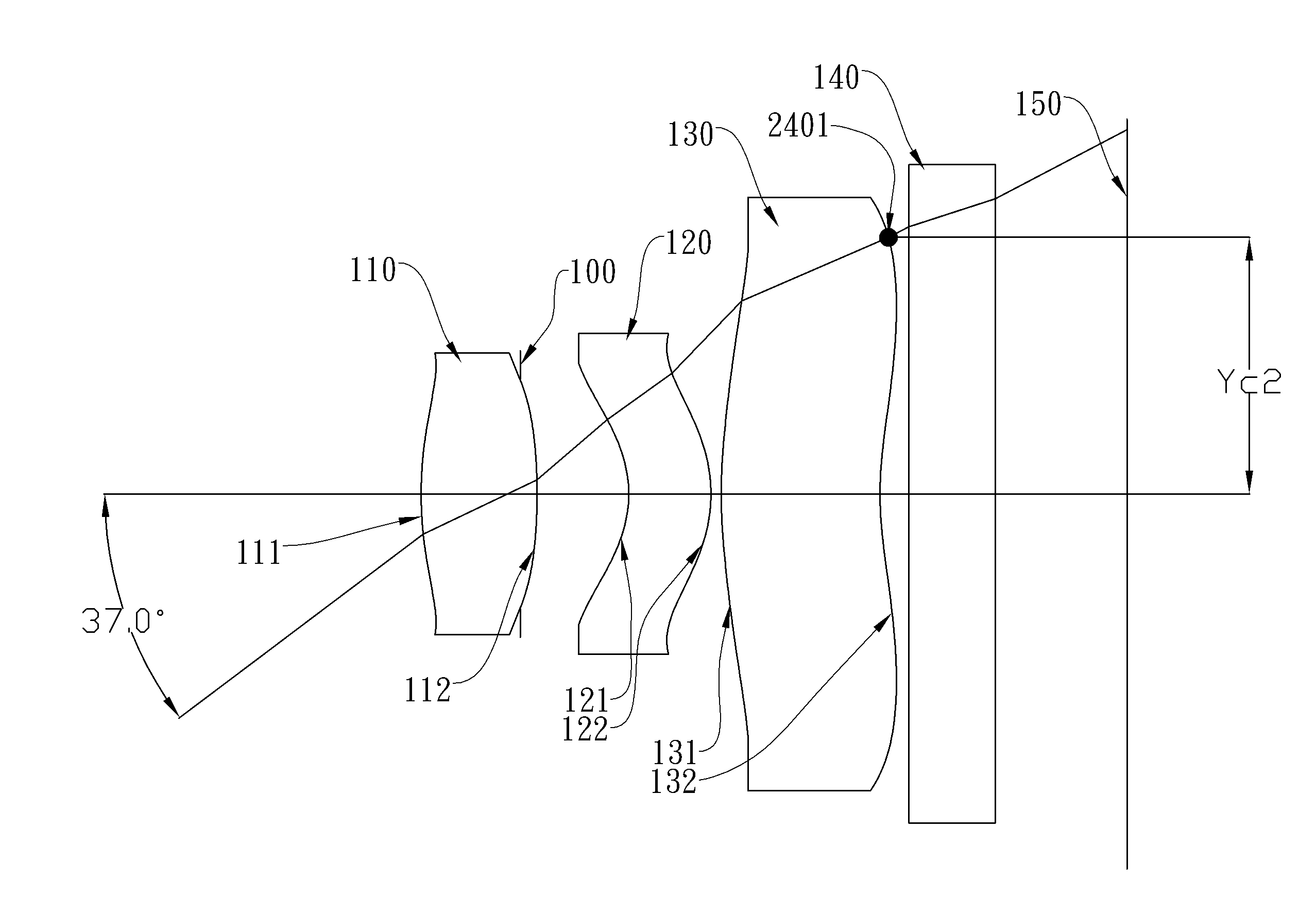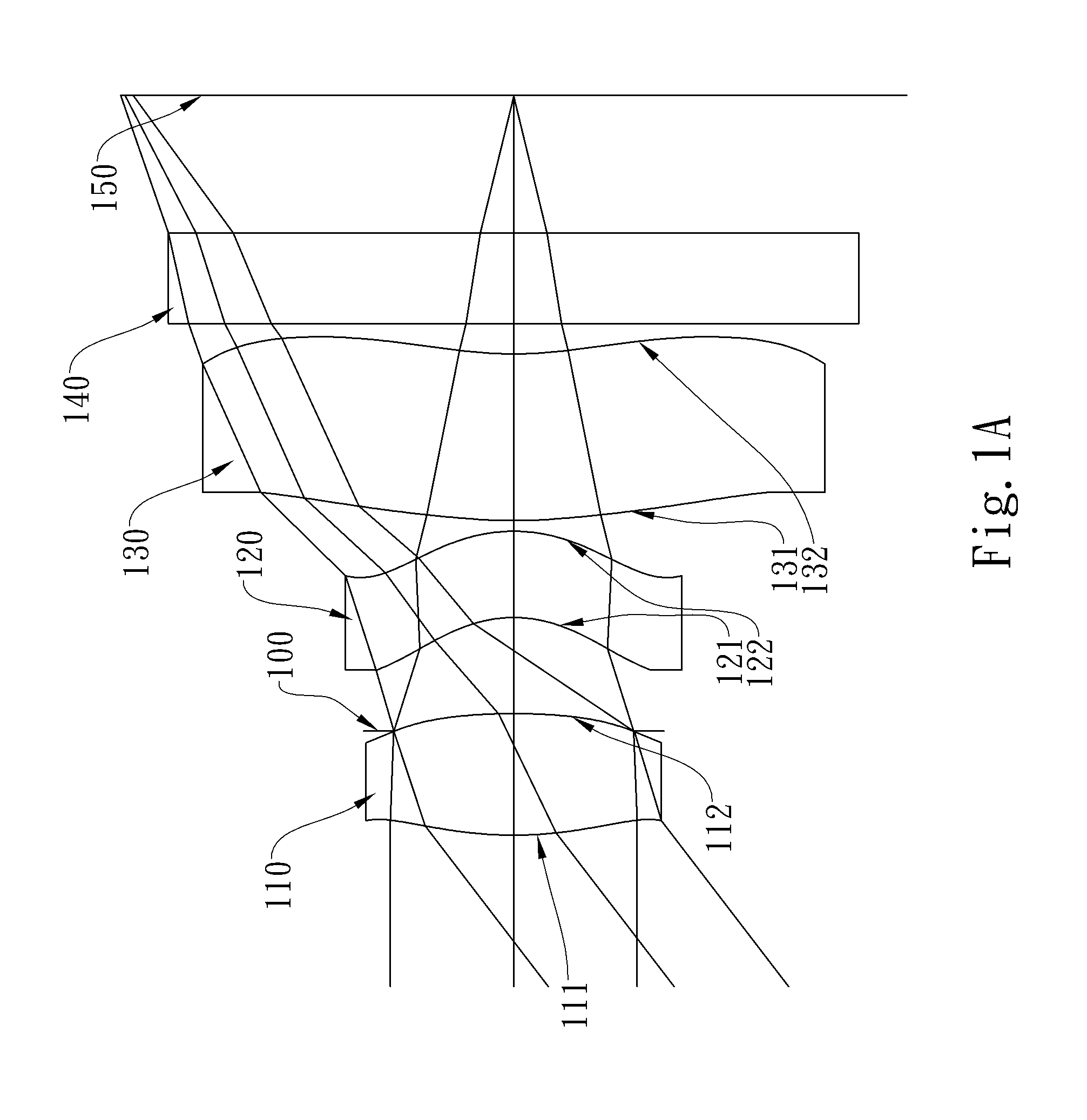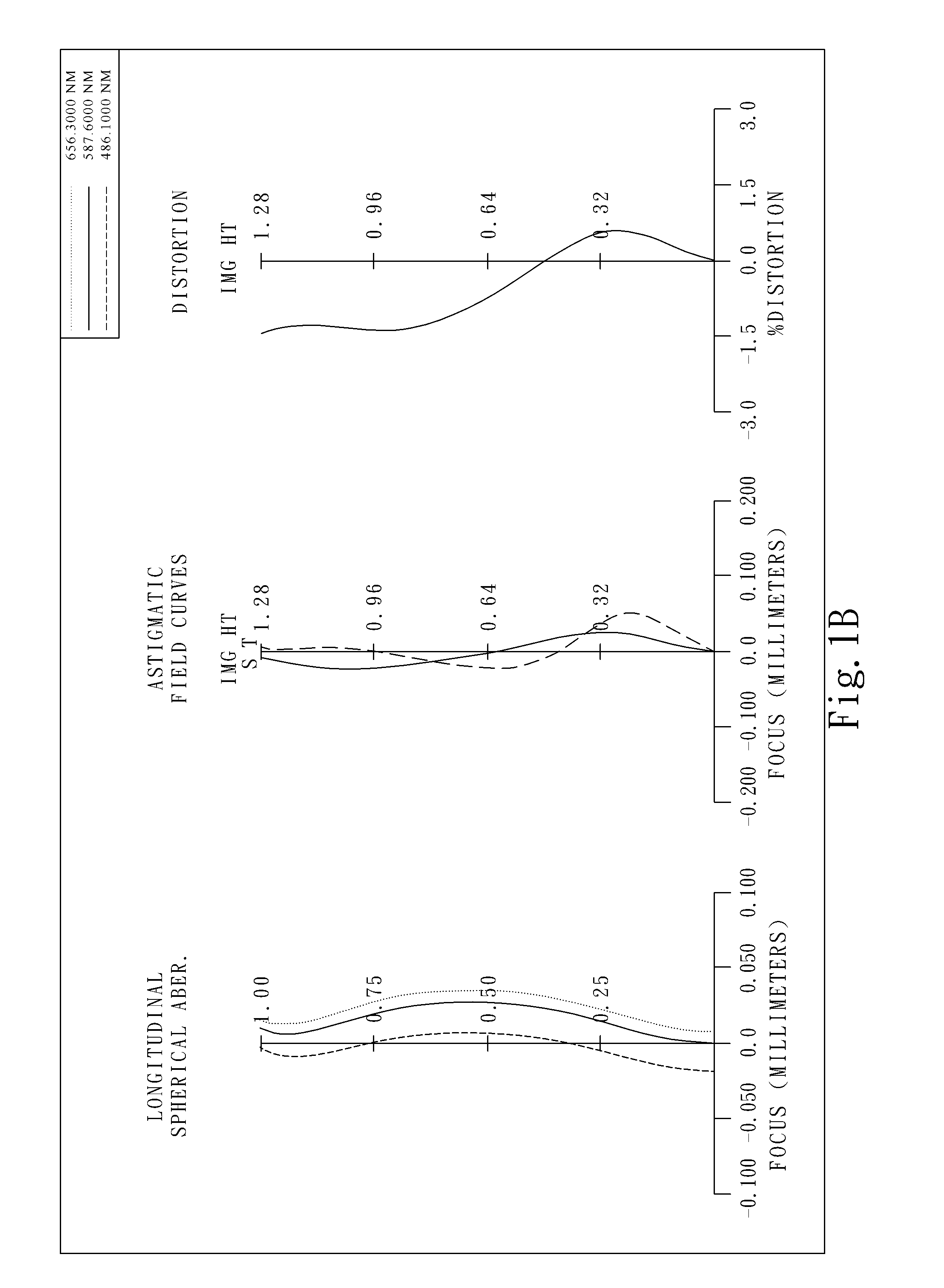Optical imaging lens assembly
a technology of optical imaging and lens assembly, which is applied in the field of can solve the problems of unsatisfactory performance of a high-end photographing module, difficult to maintain a compact total track length of the lens assembly, and the inability of the optical lens system for taking images to stay compact, so as to achieve the effect of reducing the total track length of the optical imaging lens assembly, reducing the sensitivity of the optical system, and reducing the overall track length
- Summary
- Abstract
- Description
- Claims
- Application Information
AI Technical Summary
Benefits of technology
Problems solved by technology
Method used
Image
Examples
first embodiment
[0064]In the present optical imaging lens assembly, a light ray having an incident angle of 36 degrees relative to the optical axis and passing through a center of the aperture stop intersects to form a point on an image-side surface of the lens element closest to the side of image, the perpendicular distance from the point to the optical axis is Yc1; a light ray having an incident angle of 37 degrees relative to the optical axis and passing through a center of the aperture stop intersects to form a point on an image-side surface of the lens element closest to the side of image, the perpendicular distance from the point to the optical axis is Yc2. The distances and relative locations represented by Yc1 and Yc2 will be further illustrated in FIGS. 23 and 24, respectively. FIGS. 23 and 24 illustrate the optical system of the first embodiment into which light rays having respective incident angles of 36 and 37 degrees are directed. The light ray having an incident angle of 36 degrees r...
second embodiment
[0089]In the present optical imaging lens assembly, the focal length of the optical imaging lens assembly is f, and it satisfies the relation: f=1.90 (mm).
[0090]In the second embodiment of the present optical imaging lens assembly, the f-number of the optical imaging lens assembly is Fno, and it satisfies the relation: Fno=2.40.
[0091]In the second embodiment of the present optical imaging lens assembly, half of the maximal field of view of the optical imaging lens assembly is HFOV, and it satisfies the relation: HFOV=32.5 deg.
[0092]In the second embodiment of the present optical imaging lens assembly, the Abbe number of the first lens element 210 is V1, the Abbe number of the second lens element 220 is V2, and they satisfy the relation: V1−V2=32.5.
[0093]In the second embodiment of the present optical imaging lens assembly, the thickness of the first lens element 210 on the optical axis is CT1, the thickness of the second lens element 220 on the optical axis is CT2, and they satisfy ...
third embodiment
[0102]In the present optical imaging lens assembly, the focal length of the optical imaging lens assembly is f, and it satisfies the relation: f=1.65 (mm).
[0103]In the third embodiment of the present optical imaging lens assembly, the f-number of the optical imaging lens assembly is Fno, and it satisfies the relation: Fno=2.40.
[0104]In the third embodiment of the present optical imaging lens assembly, half of the maximal field of view of the optical imaging lens assembly is HFOV, and it satisfies the relation: HFOV=35.9 deg.
[0105]In the third embodiment of the present optical imaging lens assembly, the Abbe number of the first lens element 310 is V1, the Abbe number of the second lens element 320 is V2, and they satisfy the relation: V1−V2=29.3.
[0106]In the third embodiment of the present optical imaging lens assembly, the thickness of the first lens element 310 on the optical axis is CT1, the thickness of the second lens element 320 on the optical axis is CT2, and they satisfy the ...
PUM
 Login to View More
Login to View More Abstract
Description
Claims
Application Information
 Login to View More
Login to View More - R&D
- Intellectual Property
- Life Sciences
- Materials
- Tech Scout
- Unparalleled Data Quality
- Higher Quality Content
- 60% Fewer Hallucinations
Browse by: Latest US Patents, China's latest patents, Technical Efficacy Thesaurus, Application Domain, Technology Topic, Popular Technical Reports.
© 2025 PatSnap. All rights reserved.Legal|Privacy policy|Modern Slavery Act Transparency Statement|Sitemap|About US| Contact US: help@patsnap.com



